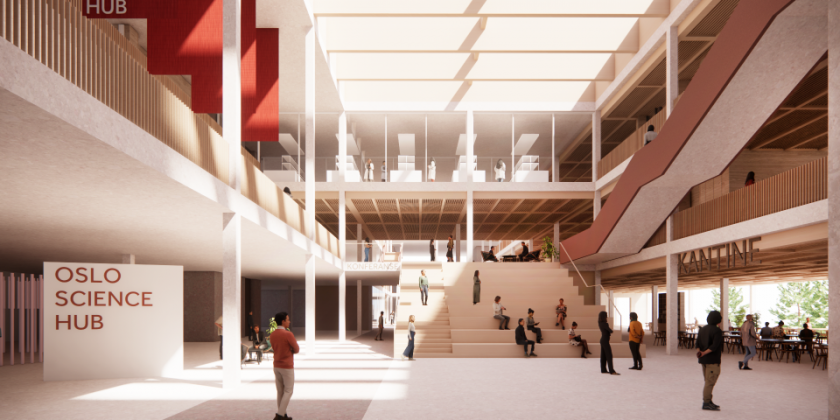New plans for the Radium Hospital Campus
The planned buildings will transform the Oslo Montebello area into an international power centre for cancer research.
The drawings for Oslo Science Hub, the next expansion phase of Oslo Cancer Cluster Innovation Park, have been sent to Oslo City for approval and were recently presented at a meeting during Arendalsuka.
“Our vision is to create a vital and inclusive environment where researchers, entrepreneurs and companies at the Radium Hospital Campus can meet and collaborate to contribute to developing better cancer treatments,” stated Thomas London, CEO of Oslo Science Hub.
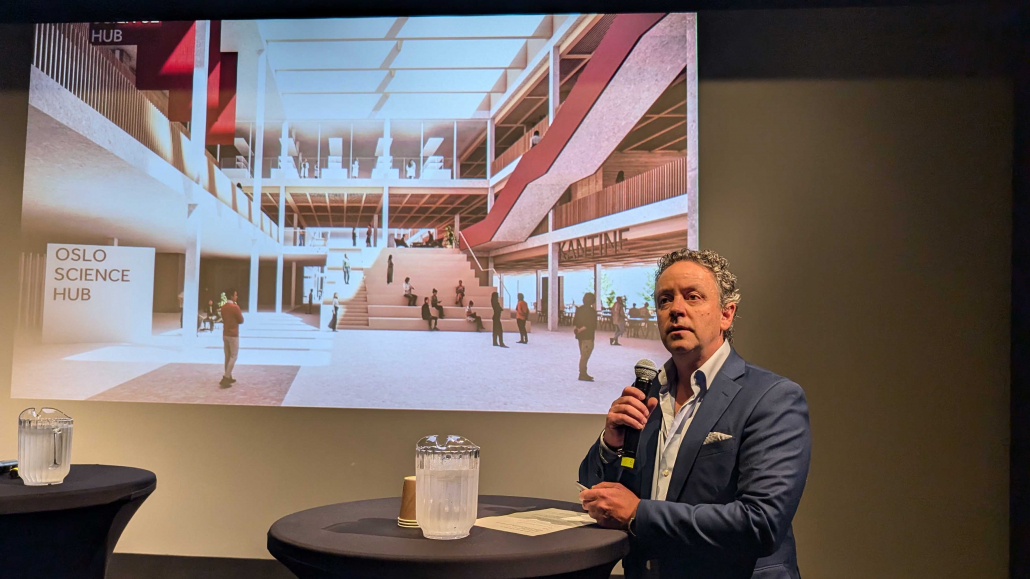
Thomas London, CEO of Oslo Science Hub, wants to contribute to developing new cancer treatments and offer a better environment for cancer patients and next of kin at the Radium Hospital. Photo: Sofia Linden
The new building will be 40 000 square metres, accommodate up to 2 000 employees, and offer state-of-the-art laboratories, complementary hospital services, biobank facilities and offices. There will be a mixture of tenants from the public and private sectors in health, oncology and biotechnology. The vision includes creating a “miniature village” with town squares, cafés, restaurants and shops to facilitate interactions between employees, patients and visitors.
A European power centre
“The Radium Hospital Campus is a European power centre for research, clinical treatment and innovation. We have a burning desire to develop the campus into a good place to do pharmaceutical research and development, to attract international key players, which are currently the missing link in the area,” commented Jónas Einarsson, founder of Oslo Cancer Cluster and CEO of Radforsk investment fund.
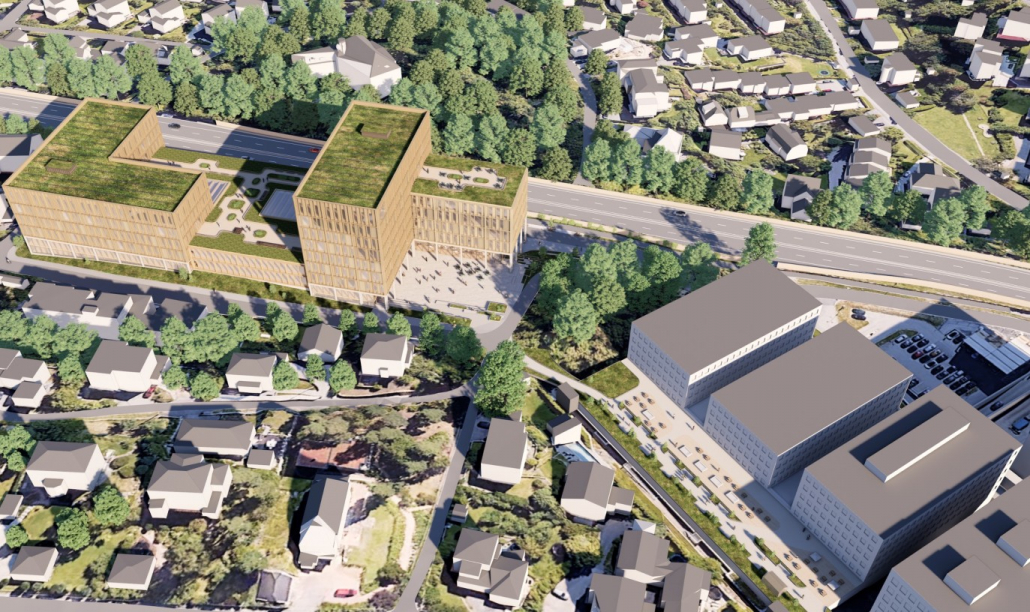
Oslo Science Hub will be built next to Oslo Cancer Cluster Innovation Park, the Institute for Cancer Research and Oslo University Hospital. Illustration: Nordic Office of Architecture
The Radium Hospital Campus already includes Oslo University Hospital, a Comprehensive Cancer Centre focused on innovation with its newly built clinic and proton centres. The area also encompasses the Institute for Cancer Research, which boasts solid research groups performing world-class research in several oncology areas.
Right next door is Oslo Cancer Cluster Innovation Park housing a mixture of public and private stakeholders, such as the Cancer Registry of Norway, Oslo University Hospital, and the Oslo Cancer Cluster Incubator with different start-ups and established companies.
A fourth building block is currently under construction, which will accommodate a restaurant, a cafeteria, a training centre, the non-profit organisations Active Against Cancer and Youth Cancer, and the international life science company Thermo Fisher Scientific.
Lack of space
“The area needs this type of building. We have been there for 30 years and are missing areas for expansion, special laboratories, and cafés and restaurants,” commented Geir Hetland, Chief Financial Officer of Thermo Fisher Scientific.
Thermo Fisher Scientific Norway was based on the Norwegian invention “Ugelstad-kulene” (later known as Dynabeads). The technology was developed in close collaboration with the Radium Hospital and today it is used in 5 billion diagnostic tests every year. Thermo Fisher Scientific need space to continue the company’s research and development in Norway.
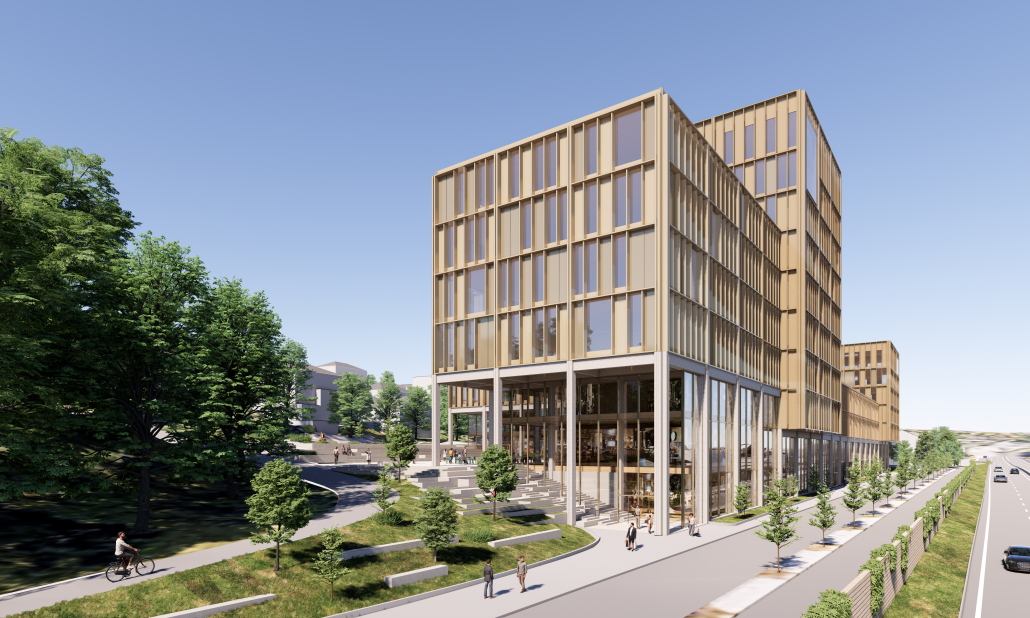
Oslo Science Hub will bring laboratories, office spaces, biobank facilities and more, which will contribute to attracting international key players in research and development. Illustration: Nordic Office of Architecture
“We have spent an unnecessary amount of time through the years handling the lack of space for our companies. We have needs from start-ups, established companies and the hospital. I am happy we have built this ecosystem with all its positive dynamics and see that it is essential for start-ups to collaborate with international companies. So there needs to be further investments both on a national and local level for the health industry to succeed,” commented Ketil Widerberg, general manager of Oslo Cancer Cluster.
More than a hospital
For the patients, next of kin and health workers, these facilities are also sorely needed, since there are currently few places to meet, exercise, enjoy food or venture outdoors.
Sigbjørn Smeland, director of the Norwegian Radium Hospital, commented:
“My predecessor Jan Vincent Johannessen coined the term ‘more than a hospital’. This is clearly an extension of his work and shows that building culture and creating value over time releases good forces. We will offer the patient more than treatment for their cancer disease. This building is incredibly valuable in the totality we offer as a Comprehensive Cancer Centre.”
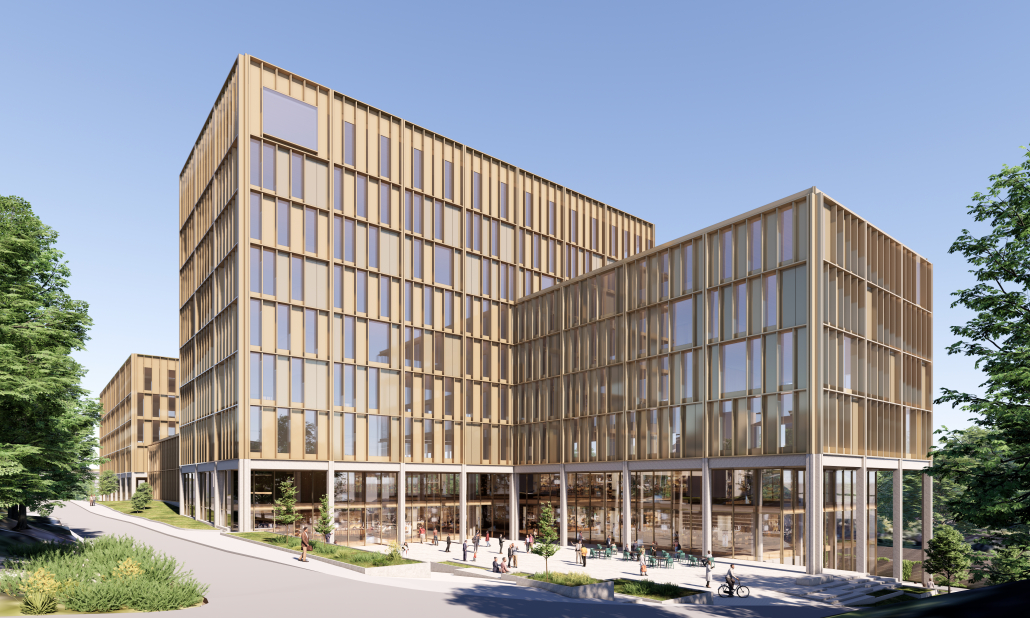
The new building will offer open and airy spaces for employees, visitors, patients and next of kin to meet and interact. Illustration: Nordic Office of Architecture
Ingrid Stenstadvold Ross, general secretary of the Norwegian Cancer Society, added:
“The most important thing is that the Radium Hospital is a spearhead in cancer care, that patients can get the best treatments available. The health services are also under pressure, meaning it is more important than ever to attract and keep skillful health workers. These facilities will help to do both these things.”
From words to action
Leader of the Oslo City Council Eirik Lae Solberg (The Conservative Party of Norway) made the campaign promise last year to ensure the sale of the real estate needed to build Oslo Science Hub.
“This is not a regular real estate issue. We need to prioritise this. We have a milieu that contributes to saving lives. From Oslo’s point of view, it is fantastic to have this industry. We have to support it if we want to be competitive in the future as a capital city,” Lae Solberg said.
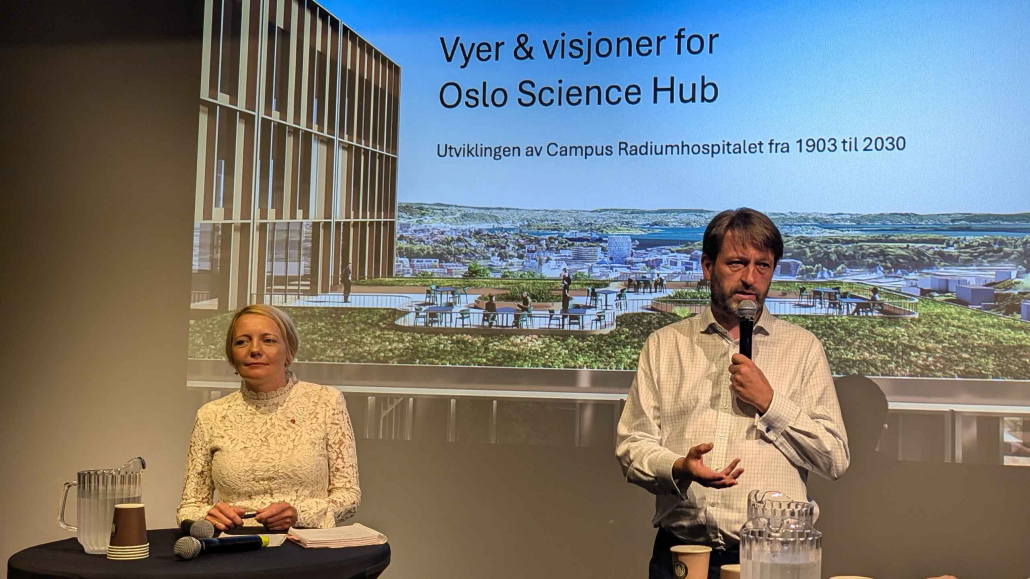
Solveig Vitanza (the Labour Party of Norway), parliamentary representative, and Eirik Lae Solberg (the Conservative Party of Norway), leader of the Oslo City Council, promised their support to the development of the Radium Hospital Campus. Photo: Sofia Linden
Secretary General of the Ministry of Health and Care Services Cathrine Lofthus was also excited to see the plans taking concrete shape:
“I believe we need physical meeting places. We are not good enough at collaborating with the industry, but we hope to be better. This is exactly what we are talking about when we refer to the Roadmap for the Health Industry and Health as an Export Priority.”
Parliamentary representative Solveig Vitanza (Labour Party of Norway) expressed her ambition to go from words to action:
“We must facilitate the whole value chain: testing and piloting, clinical studies, clusters, health technology and data. We are in a very special time, with a recent pandemic and a geopolitical situation, which makes health a higher priority than ever.”
Watch the meeting here (in Norwegian):
Oslo Science Hub facts
- Planned to be finished: 2030
- Brutto area: 40 000 sqm
- Potentially 2000 employees
- State-of-the-art laboratories, complementary hospital services, biobank and offices
- Mix of tenants similar to Oslo Cancer Cluster Innovation Park: public and private actors in oncology and biotechnology, especially international pharmaceutical industry
- Open areas for the public, such as shops, restaurants, cafes and roof terraces
The Radium Hospital Campus facts
- One of Europe’s largest campuses for cancer research and treatment
- Consists of the new Radium Hospital, which opens in September 2024, the Institute for Cancer Research and Oslo Cancer Cluster Innovation Park and Incubator (OCCI)
- Total building mass is 105 000 sqm
- About 3 500 people work on the campus in different enterprises, while Ullern Upper Secondary School, which is an integrated part of OCCI, has 970 students
- OCCI expands with 12 000 sqm that will be finished in 2025, which will include Thermo Fisher Scientific with several research departments, Active Against Cancer and some of the companies from OCC Incubator
- A mix of public and private institutions that collaborate across organisations
- Ullern Upper Secondary School have a school collaboration with other enterprises on campus, which includes placements and mentorships
- Oslo Cancer Cluster Incubator with 16 start-up companies
- A part of Oslo Science City, which is Norway’s first innovation district and an important part of Oslo City’s investment as a business capital

